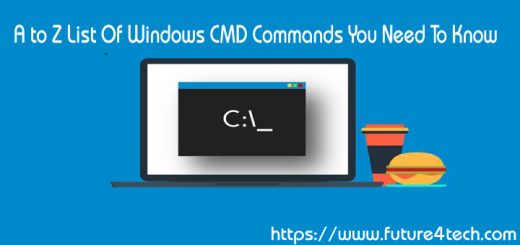slmgr.vbs – Windows CMD Command
Notice: A non well formed numeric value encountered in /home/future4tech/public_html/wp-content/plugins/crayon-syntax-highlighter/crayon_formatter.class.php on line 118
Notice: A non well formed numeric value encountered in /home/future4tech/public_html/wp-content/plugins/crayon-syntax-highlighter/crayon_formatter.class.php on line 119
Software Licensing Management Tool. Windows Activation and Key Management Service (KMS)
1 2 |
Syntax slmgr [MachineName [Username Password]] [Option] |
Key
machinename The machine to administer, by default the current local machine.
username An administrator equivalent user account for the remote computer.
password The password for the user account on the remote computer.
/ato Activate Windows license and product key against Microsoft’s server.
/atp Confirmation_ID Activate Windows with user-provided Confirmation ID
/ckms Clear the name of KMS server used to default and port to default.
/cpky Clear product key from the registry (prevents disclosure attacks)
/dli Display the current license information with activation
status and partial product key.
/dlv Verbose, similar to -dli but with more information.
/dti Display Installation ID for offline activation
/ipk Key Enter a new product key supplied as xxxxx-xxxxx-xxxxx-xxxxx-xxxxx
/ilc License_file Install license
/rilc Re-install system license files
/rearm Reset the evaluation period/licensing status and activation state of the machine
/skms activationservername:port
Set the Volume Licensing KMS server and/or the port used for KMS activation
(where supported by your Windows edition)
/skhc Enable KMS host caching (default), this blocks the use of DNS priority and
weight after the initial discovery of a working KMS host.
If the system can no longer contact the working KMS host, discovery will be attempted again.
/ckhc Disable KMS host caching. This setting instructs the client to use DNS auto-discovery
each time it attempts KMS activation (recommended when using priority and weight)
/sai interval
Sets the interval in minutes for unactivated clients to attempt KMS connection.
The activation interval must be between 15 minutes and 30 days, although the default (2 hours)
is recommended.
The KMS client initially picks up this interval from the registry but switches to the KMS
setting after the first KMS response has been received.
/sri interval
Sets the renewal interval in minutes for activated clients to attempt KMS connection.
The renewal interval must be between 15 minutes and 30 days.
This option is set initially on both the KMS server and client sides.
The default is 10080 minutes (7 days).
/spri Set the KMS priority to normal (default).
/cpri Set the KMS priority to low.
Use this option to minimize contention from KMS in a co-hosted environment.
Note that this could lead to KMS starvation, depending on what other applications
or server roles are active. Use with care.
/sprt port
Sets the port on which the KMS host listens for client activation requests. The default TCP port is 1688.
/sdns Enable DNS publishing by the KMS host (default).
/cdns Disable DNS publishing by the KMS host.
/upk Uninstall current installed product key and return license status back to trial state.
/xpr Show the expiry date of current license (if not permanently activated)
Token-based activation:
/lil List the installed token-based activation issuance licenses.
/ril ILID ILvID
Remove an installed token-based activation issuance license.
/stao Set the Token-based Activation Only flag, disabling automatic KMS activation.
/ctao Clear the Token-based Activation Only flag (default), enabling automatic KMS activation.
/ltc List valid token-based activation certificates that can activate installed software.
/fta Certificate Thumbprint [PIN]
Force token-based activation using the identified certificate.
The optional personal identification number (PIN) is provided to unlock the private
key without a PIN prompt when using certificates that are protected by hardware
(for example, smart cards).
All actions (other than displaying status) require elevated administrator privileges.
Slmgr.vbs script is not intended to work across platforms i.e. between Vista and Windows 7
Examples
C:\> cscript C:\windows\system32\slmgr.vbs wkstn64 administrator pa55w0rd1 -dli
C:\> cscript slmgr.vbs -skms 192.168.10.1:8090
C:\> cscript slmgr.vbs -skms KMSServer:8090


hello there and thank you for your info – I have definitely picked up anything new from right here. I did however expertise a few technical points using this website, as I experienced to reload the site lots of times previous to I could get it to load correctly. I had been wondering if your web host is OK? Not that I’m complaining, but sluggish loading instances times will very frequently affect your placement in google and could damage your quality score if ads and marketing with Adwords. Anyway I am adding this RSS to my email and could look out for a lot more of your respective fascinating content. Ensure that you update this again very soon..